-
 Bitcoin
Bitcoin $97,038.4312
2.25% -
 Ethereum
Ethereum $1,848.8743
1.95% -
 Tether USDt
Tether USDt $1.0001
0.00% -
 XRP
XRP $2.2234
0.36% -
 BNB
BNB $602.6126
0.23% -
 Solana
Solana $150.7669
0.92% -
 USDC
USDC $0.9998
-0.02% -
 Dogecoin
Dogecoin $0.1828
4.44% -
 Cardano
Cardano $0.7144
3.26% -
 TRON
TRON $0.2443
-1.18% -
 Sui
Sui $3.5186
0.23% -
 Chainlink
Chainlink $14.9164
1.96% -
 Avalanche
Avalanche $21.9682
3.68% -
 Stellar
Stellar $0.2764
1.20% -
 UNUS SED LEO
UNUS SED LEO $8.9391
-2.03% -
 Toncoin
Toncoin $3.2421
1.58% -
 Shiba Inu
Shiba Inu $0.0...01360
1.42% -
 Hedera
Hedera $0.1877
2.10% -
 Bitcoin Cash
Bitcoin Cash $369.1441
-0.18% -
 Litecoin
Litecoin $89.8465
6.19% -
 Hyperliquid
Hyperliquid $20.2598
2.63% -
 Polkadot
Polkadot $4.2361
2.88% -
 Dai
Dai $0.9998
-0.03% -
 Bitget Token
Bitget Token $4.3977
0.78% -
 Monero
Monero $272.1532
-3.35% -
 Ethena USDe
Ethena USDe $1.0005
0.00% -
 Pi
Pi $0.6002
-4.39% -
 Pepe
Pepe $0.0...08842
-1.38% -
 Aptos
Aptos $5.5441
2.32% -
 Uniswap
Uniswap $5.3502
0.40%
Monero js mining tutorial
Monero's CryptoNightR mining algorithm, designed to resist ASICs, promotes decentralization and ensures a more equitable distribution of mining rewards.
Jan 11, 2025 at 12:07 pm
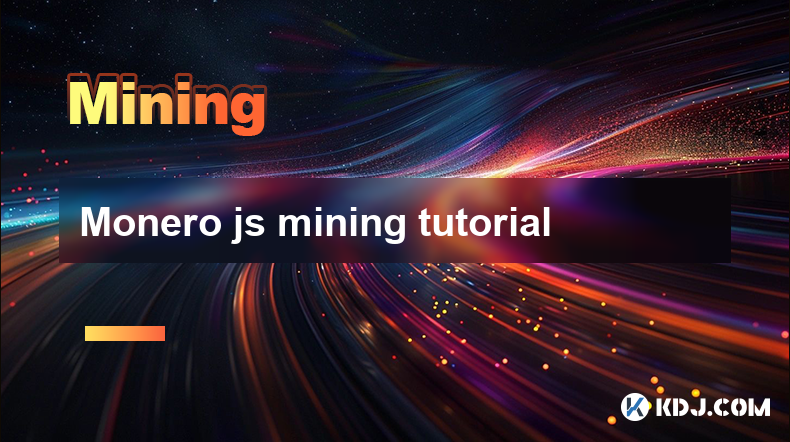
Monero Mining Tutorial: A Detailed Guide to Mining XMR
Key Points:
- Understanding Monero's mining algorithm and its significance
- Choosing the right hardware for Monero mining
- Setting up a mining rig and joining a mining pool
- Monitoring your mining progress and troubleshooting potential issues
- Understanding the profitability of Monero mining
Step 1: Understanding Monero's Mining Algorithm
Monero employs the CryptoNightR algorithm for mining, which is specifically designed to be ASIC-resistant. ASICs (Application-Specific Integrated Circuits) are specialized hardware devices optimized for mining certain algorithms, providing an unfair advantage to those who use them. CryptoNightR's resistance to ASICs ensures a more decentralized network and fairer distribution of mining rewards.
Step 2: Selecting Monero Mining Hardware
The primary hardware options for Monero mining include CPUs and GPUs. While CPUs are generally more affordable and accessible, GPUs offer significantly higher hashing power and profitability. For optimal performance, dedicated mining GPUs from reputable manufacturers such as NVIDIA or AMD are recommended. Consider factors like hashrate, power consumption, and cooling efficiency when selecting hardware.
Step 3: Setting Up a Mining Rig
Assemble your mining components, including a motherboard, power supply, and cooling system. Install the mining software (e.g., XMRig) on your OS and configure it with your wallet address and mining pool details. Ensure proper ventilation and monitor temperatures to prevent hardware damage.
Step 4: Joining a Mining Pool
Mining pools combine the hashing power of multiple miners, increasing their chances of finding blocks and receiving rewards. Choose a pool with a reliable reputation, low fees, and stable performance. Register an account and input your pool address into your mining software.
Step 5: Monitoring and Troubleshooting Mining
Monitor your mining performance using pool dashboards or third-party tools. Check hashrate, temperature, and reward payouts regularly. Troubleshooting potential issues involves checking network connections, adjusting cooling settings, updating drivers, or seeking support from the mining pool or hardware manufacturer if necessary.
Step 6: Profitability Considerations
Mining profitability depends on factors such as coin price, hashrate, power consumption, and mining pool fees. Use profitability calculators to estimate potential earnings and compare different hardware options. Regularly review profitability and adjust your mining strategy as needed to optimize your returns.
FAQs:
Q: What are the advantages of mining Monero?
A: Monero mining provides rewards in XMR, a privacy-focused cryptocurrency with a strong community and development team. It also contributes to securing the Monero network and decentralizing its governance.
Q: Are there risks associated with Monero mining?
A: Mining involves hardware investments and electricity consumption, so it's essential to research profitability and manage costs carefully. Market volatility and fluctuations in coin price can also impact earnings.
Q: What are alternative ways to acquire Monero?
A: Besides mining, Monero can be purchased from cryptocurrency exchanges, earned through faucets or airdrops, or received as payment for goods or services.
Q: How does the CryptoNightR algorithm improve decentralization?
A: CryptoNightR's resistance to ASICs prevents the centralization of mining power, allowing more individuals and smaller mining operations to participate in the network. This enhances the security and stability of the Monero ecosystem.
Q: What are some reputable Monero mining pools?
A: Some well-regarded Monero mining pools include MinerGate, Nanopool, and SupportXMR. These pools offer reliability, low fees, and transparent payout systems.
Disclaimer:info@kdj.com
The information provided is not trading advice. kdj.com does not assume any responsibility for any investments made based on the information provided in this article. Cryptocurrencies are highly volatile and it is highly recommended that you invest with caution after thorough research!
If you believe that the content used on this website infringes your copyright, please contact us immediately (info@kdj.com) and we will delete it promptly.
- Stellar (XLM) Has Broken Out of Its Downtrend and Is Now Entering a Phase of Upward Consolidation
- 2025-05-02 10:05:20
- Celestia: The Modular Blockchain Revolutionizing the Crypto World
- 2025-05-02 10:05:20
- DN Miner Launches Innovative Cloud Mining Service, Using Bitcoin (BTC) to Launch Dogecoin (DOGE) Mining Machines, Users Can Earn Up to $8,0000 Per Day
- 2025-05-02 10:01:09
- Bitcoin [BTC] Short-Term Holders Have Been Taking Profits
- 2025-05-02 10:01:09
- Dogecoin (DOGE) Whales Accumulate 100M Coins Ahead of Potential Breakout
- 2025-05-02 09:55:12
- Libre Launches Telegram Bond Fund ($TBF) on The Open Network Blockchain to Tokenize $500M of Telegram's Debt
- 2025-05-02 09:55:12
Related knowledge
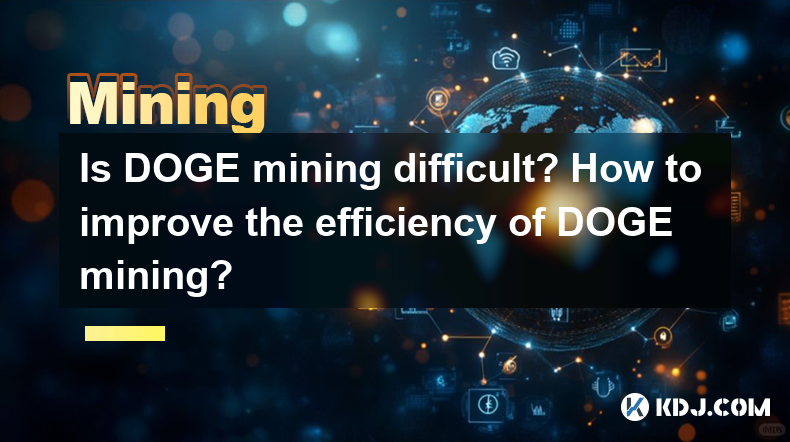
Is Doge mining difficult? How to improve the efficiency of DOGE mining?
May 02,2025 at 09:07am
Dogecoin, commonly known as DOGE, has gained significant popularity in the cryptocurrency world, partly due to its community-driven nature and the backing of influential figures. However, one of the common questions among potential miners is whether DOGE mining is difficult and how to improve its efficiency. Let's delve into these topics in detail. Unde...
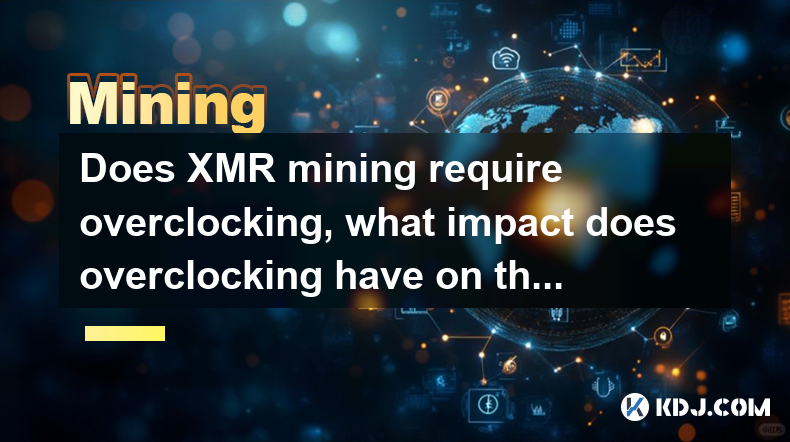
Does XMR mining require overclocking, what impact does overclocking have on the life of the hardware?
May 02,2025 at 09:15am
Does XMR Mining Require Overclocking?Mining Monero (XMR) does not inherently require overclocking. XMR mining can be effectively conducted using standard hardware settings, especially if you are using dedicated mining hardware like ASICs or specialized GPUs. However, many miners choose to overclock their hardware to increase their hash rates and potenti...
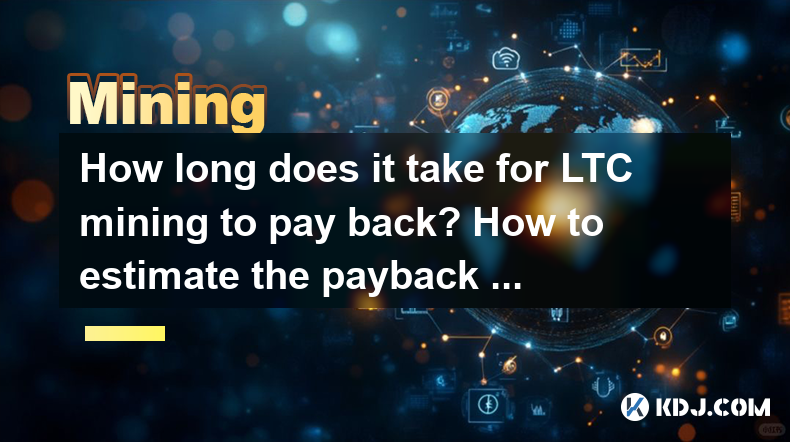
How long does it take for LTC mining to pay back? How to estimate the payback period?
May 02,2025 at 01:56am
How long does it take for LTC mining to pay back? How to estimate the payback period? Litecoin (LTC) mining can be a profitable venture, but understanding the payback period is crucial for miners to make informed decisions. The payback period for LTC mining varies based on several factors, including hardware costs, electricity rates, mining difficulty, ...

Is the electricity cost of LTC mining high? How to reduce energy consumption?
May 02,2025 at 04:42am
Is the electricity cost of LTC mining high? How to reduce energy consumption? Litecoin (LTC) mining, like other cryptocurrency mining processes, involves significant electricity consumption. This article delves into the specifics of the electricity costs associated with LTC mining and explores various strategies to reduce energy consumption effectively....
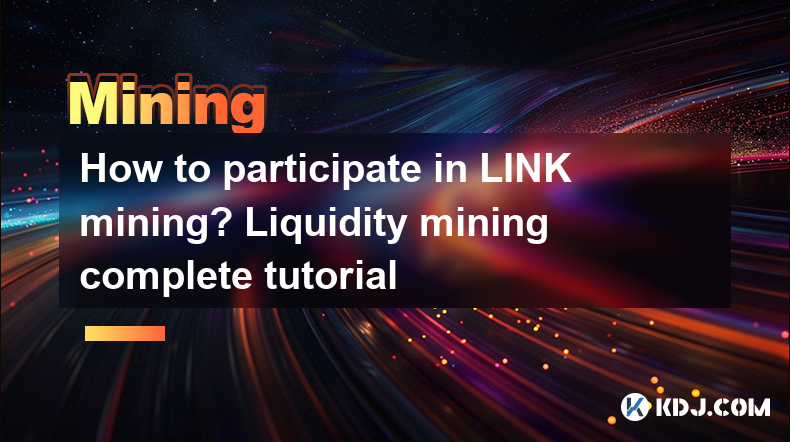
How to participate in LINK mining? Liquidity mining complete tutorial
Apr 28,2025 at 07:00pm
Participating in LINK mining, also known as liquidity mining with Chainlink (LINK), involves providing liquidity to decentralized finance (DeFi) platforms that support LINK tokens. This process can be rewarding but also comes with risks and complexities. This tutorial will guide you through the entire process of participating in LINK liquidity mining, f...
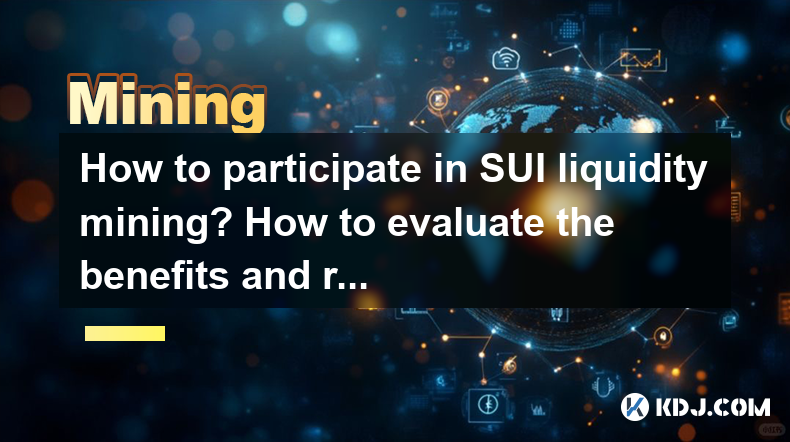
How to participate in SUI liquidity mining? How to evaluate the benefits and risks?
Apr 29,2025 at 09:42am
Participating in SUI liquidity mining is an exciting opportunity for cryptocurrency enthusiasts to earn rewards by providing liquidity to decentralized finance (DeFi) platforms. However, it's crucial to understand both the benefits and risks associated with this activity. In this article, we will guide you through the process of participating in SUI liq...

Is Doge mining difficult? How to improve the efficiency of DOGE mining?
May 02,2025 at 09:07am
Dogecoin, commonly known as DOGE, has gained significant popularity in the cryptocurrency world, partly due to its community-driven nature and the backing of influential figures. However, one of the common questions among potential miners is whether DOGE mining is difficult and how to improve its efficiency. Let's delve into these topics in detail. Unde...

Does XMR mining require overclocking, what impact does overclocking have on the life of the hardware?
May 02,2025 at 09:15am
Does XMR Mining Require Overclocking?Mining Monero (XMR) does not inherently require overclocking. XMR mining can be effectively conducted using standard hardware settings, especially if you are using dedicated mining hardware like ASICs or specialized GPUs. However, many miners choose to overclock their hardware to increase their hash rates and potenti...

How long does it take for LTC mining to pay back? How to estimate the payback period?
May 02,2025 at 01:56am
How long does it take for LTC mining to pay back? How to estimate the payback period? Litecoin (LTC) mining can be a profitable venture, but understanding the payback period is crucial for miners to make informed decisions. The payback period for LTC mining varies based on several factors, including hardware costs, electricity rates, mining difficulty, ...

Is the electricity cost of LTC mining high? How to reduce energy consumption?
May 02,2025 at 04:42am
Is the electricity cost of LTC mining high? How to reduce energy consumption? Litecoin (LTC) mining, like other cryptocurrency mining processes, involves significant electricity consumption. This article delves into the specifics of the electricity costs associated with LTC mining and explores various strategies to reduce energy consumption effectively....

How to participate in LINK mining? Liquidity mining complete tutorial
Apr 28,2025 at 07:00pm
Participating in LINK mining, also known as liquidity mining with Chainlink (LINK), involves providing liquidity to decentralized finance (DeFi) platforms that support LINK tokens. This process can be rewarding but also comes with risks and complexities. This tutorial will guide you through the entire process of participating in LINK liquidity mining, f...

How to participate in SUI liquidity mining? How to evaluate the benefits and risks?
Apr 29,2025 at 09:42am
Participating in SUI liquidity mining is an exciting opportunity for cryptocurrency enthusiasts to earn rewards by providing liquidity to decentralized finance (DeFi) platforms. However, it's crucial to understand both the benefits and risks associated with this activity. In this article, we will guide you through the process of participating in SUI liq...
See all articles





















![[Geometry Dash] VAST by AdrianArtistry (2nd update on first coin) [Geometry Dash] VAST by AdrianArtistry (2nd update on first coin)](/uploads/2025/05/01/cryptocurrencies-news/videos/geometry-dash-vast-adrianartistry-nd-update-coin/image-1.webp)































































